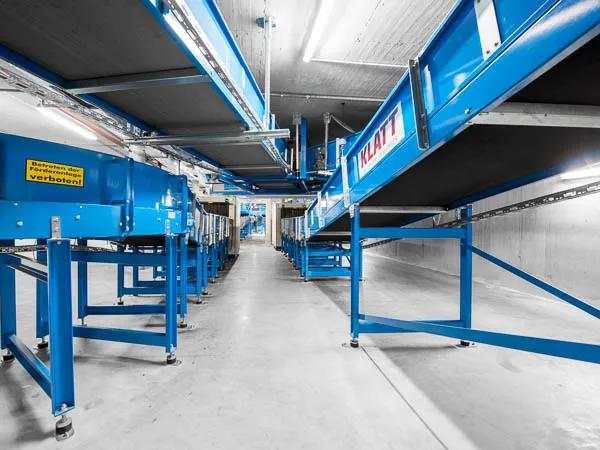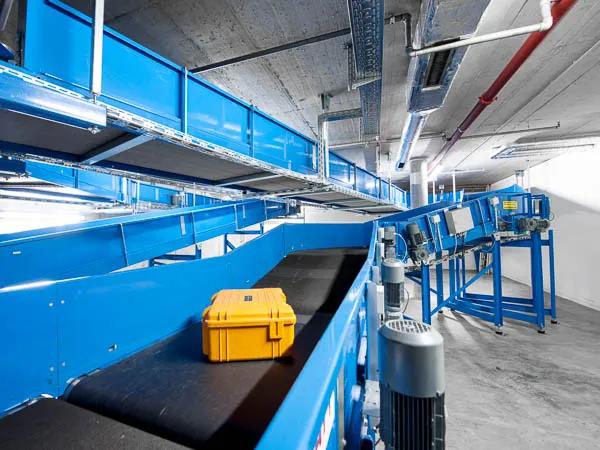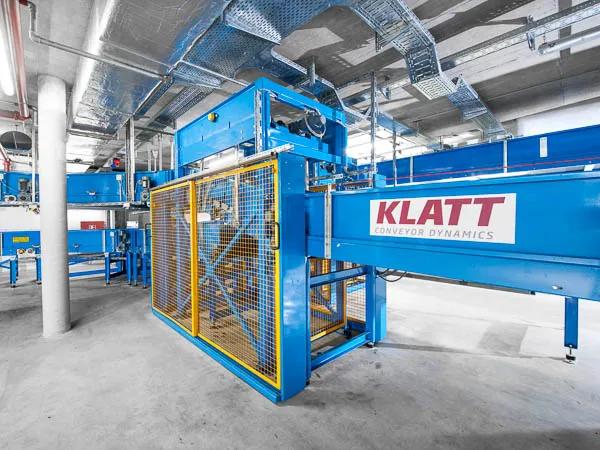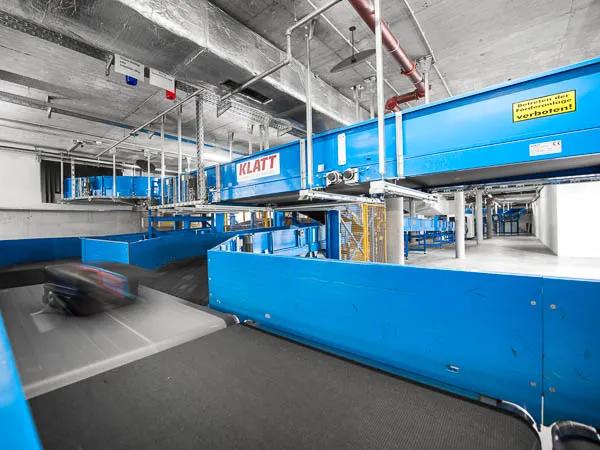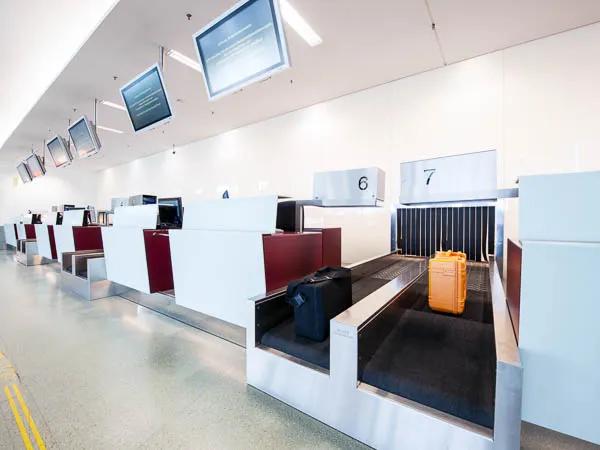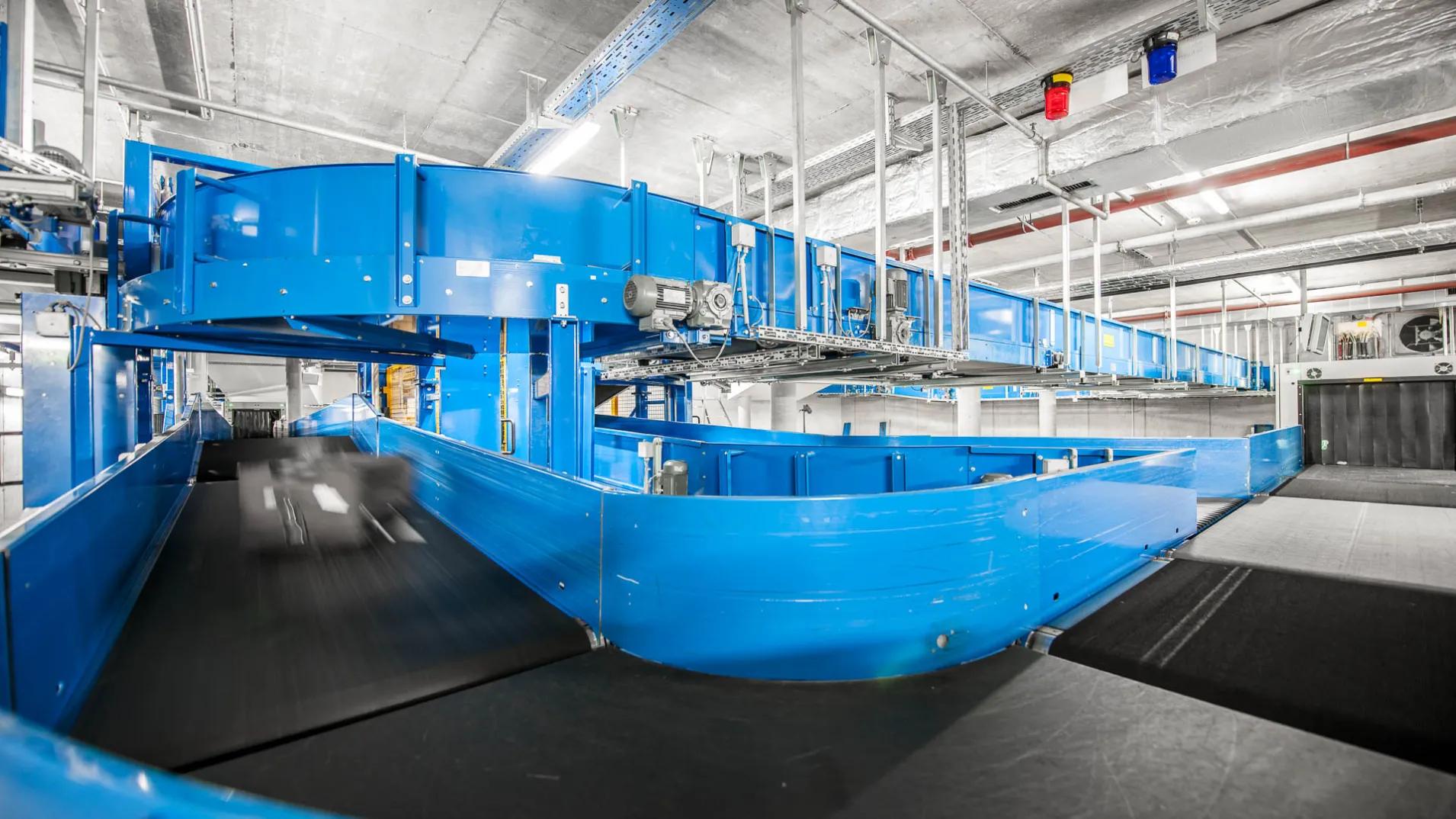
Baggage conveyor systems
Belt conveyor
The belt conveyor can transport shipping units horizontally, upwards or downwards to a defined destination.
If the belt conveyor moves at an incline either up or down, an additional belt is used at the lower end. The transmission takes place with a low-maintenance chain transmission. To ensure that the transfer to the next conveyor is as gentle and quiet as possible, transition bends with increments of 6 degrees are used at the upper conveyor level.
A belt conveyor is driven by a head or middle drive. Due to the more economical use of material in the head drive, it is lighter and fewer spare parts are required. Due to the larger wrap angle of the belt with the middle drive, it can better transfer the drive power to the belt, which allows the construction of longer belts and the transport of heavier weights. The belt can also be tensioned in two ways: Either by shifting the drive/deflection drum or by a central tensioning station. The advantage of the middle clamping station is that it can be operated from one side. In all cases, the belt runs via the deflection drum.
The belt conveyor is equipped with separately height-adjustable support feet to optimally adjust the conveying level. In the case of ceiling mounting, suitable suspension devices are included for easy installation on site.
The base frame and transverse spacers of our belt conveyor are made of extruded aluminium with a wall thickness of 4 mm and are additionally bolted to ensure maximum stability. The side guides can be integrated into the profile or set up as an additional guide above the scaffolding. The belt’s running surface is made of galvanized sheet steel.
